Image
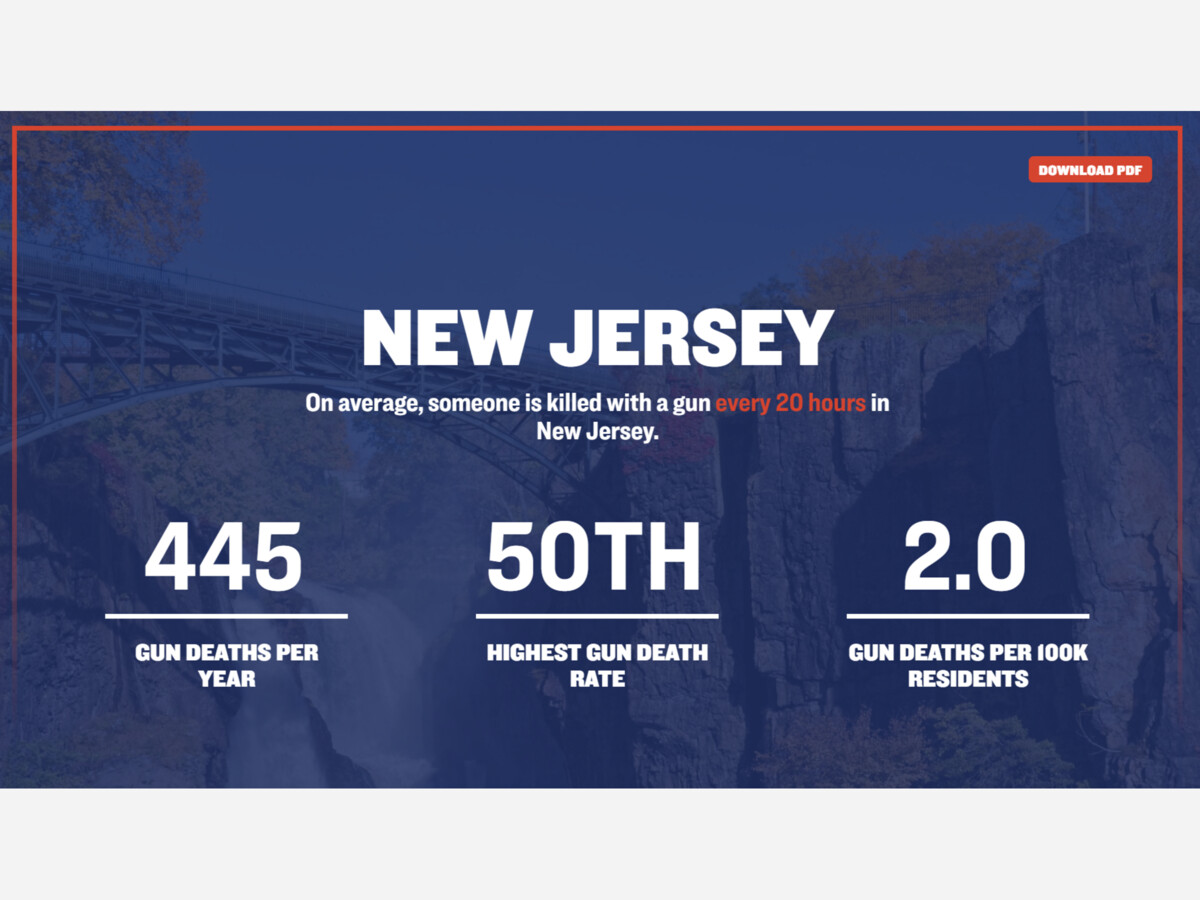

Social distancing and Stay-at-home orders that resulted from the COVID-19 pandemic have slowed down the rise of many life-threatening statistics in the U.S., but social isolation may not decrease rates of gun-related deaths in America.
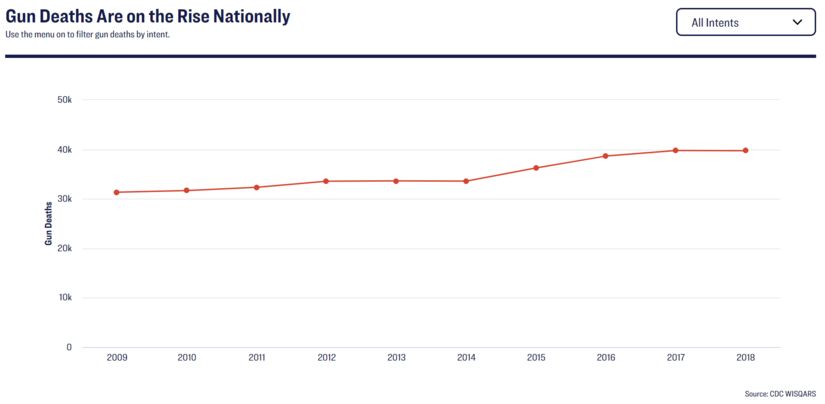
The COVID-19 pandemic has thus far been associated with an increase in gun violence rates. Open any news site and you will quickly find a plethora of fear-mongering articles citing the gruesome deaths of U.S. citizens at the hand of guns. According to Giffords.org, an average of 39,000 Americans die from gun violence every year, at an average of 100 U.S. citizen deaths per day.
The United States has the weakest gun laws and most guns of any comparable nation, and the rate of gun-related deaths continues to rise. Comparably, the U.S. accounts for about 4% of the global population but makes up 35% of global firearm suicides. (Mohsen Naghavi, et al., 2018)
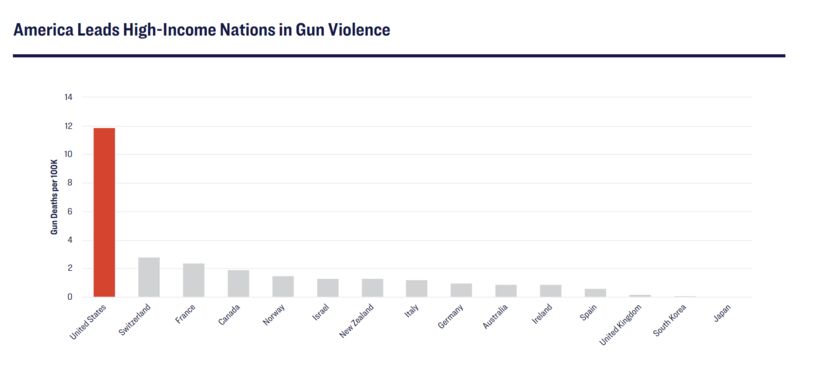
Americans are twenty-five times more likely to be killed by a gun than people in other high-income countries. (Erin Grinshteyn and David Hemenway, 2019) Continually, the U.S. sees an approximate average of 11.9 gun deaths per 100,000 people, and gun deaths have been on the rise nationally since the past decade.
Homicides with a gun, suicides by gun, and police shootings have all been on a constant rise for the past ten years. Nearly every American will know at least one victim of gun violence in their lifetime. (Bindu Kalesan, Janice Weinberg, and Sandro Galea, 2016)
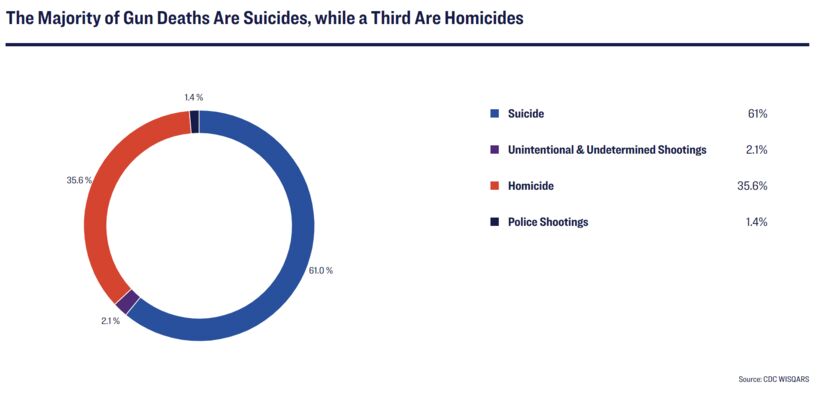
The CDC considers gun-related deaths a national public health emergency and cites the fact that 1 million Americans were killed by guns in the past decade. (Centers for Disease Control and Prevention, “Fatal and Nonfatal Injury Reports,” March 20, 2020) According to CDC reports, an average of 38,826 gun deaths occurs every year.
In 2017, the number of gun-related injuries and deaths surpassed the number of vehicle-related injuries and deaths in the United States. A study published in The American Journal of Emergency Medicine analyzed gun-related injuries and deaths in several major U.S. cities to determine the impact of the COVID-19 pandemic on gun-related incidents.
The study found that New York City, according to reports received from the NYPD, saw an 11.7% increase in gun violence from 2019 to 2020, and an 18.6% increase from 2018. Baltimore, Maryland saw a 2% increase in gun violence from 2019 to 2020. And Chicago saw a 23% increase in gun violence from 2019 to 2020. (Mason Sutherland; Mark McKenney, MD, MBA, FACS; Adel Elkbuli, MD, MPH. May 06, 2020)
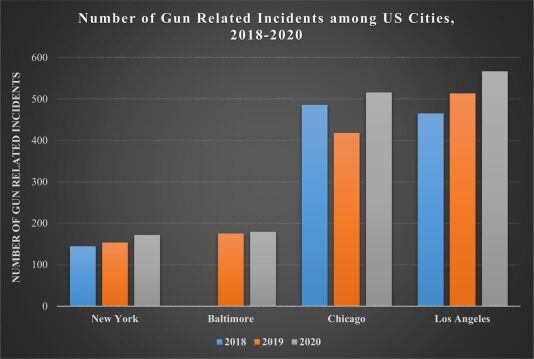
The United States has seen an increase in gun violence over the course of the COVID-19 pandemic. The above-mentioned study from The American Journal of Emergency Medicine offers several explanations for the increase in gun violence during the pandemic.
First, the study cites a surge in unemployment during COVID-19. New York state, as of March 14, 2020, reported 12.4% of its labor force as unemployed. The study suggests unemployment increases one's chance of being involved in gun-related incidents. More time outside of the workplace correlates to an increase in gun violence. Continually, those struggling financially during the COVID pandemic were more likely to be involved in armed robberies. The NYPD reported a 22.4% increase in armed robberies from 2019 to 2020.
Second, the study cites an increase in the sale and consumption of alcohol which is known to increase risk-taking behavior. The WHO even released a statement warning of the increase in alcohol consumption during national and state-wide lockdowns saying alcohol consumption should "be restricted during [a] lockdown."
Third, the study points out the increase in gun ownership in the United States. The FBI saw a 34.7% increase in new gun owner background checks from 2019 to 2020, and more guns always correlate to more gun-related injuries and deaths.
So how does New Jersey fare among the gun-carrying nation?
New Jersey sees an average of 465 gun deaths per year. 191 of those deaths are by suicide (41%) and 263 of those deaths are classified as homicides (56%). Our state is 50th in the nation (least amount) for the highest number of gun-related deaths with about 2 gun deaths per 100,000 residents. NJ saw 445 deaths by guns last year and on average one person dies from gun violence in New Jersey every 20 hours. (K. Parker, et al., June 22, 2017) And we 50th.
Yet, perhaps the most worrying statistic of all is that each year three million children are exposed to gun violence in the United States, and that average is rising every day. (Katherine Fowler, et al., 2017)
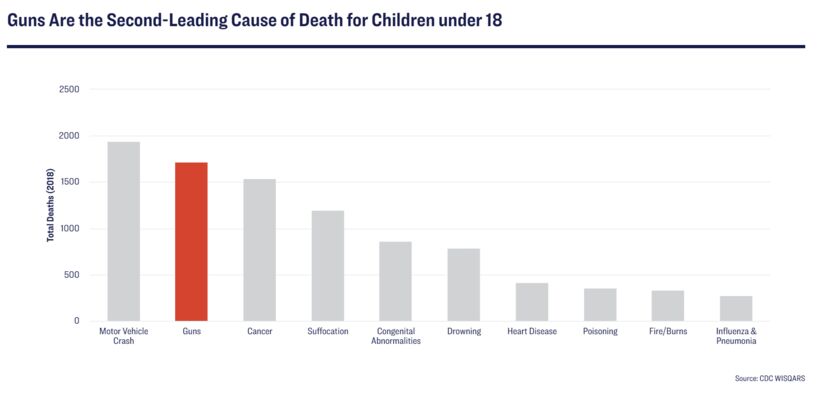
Turn on the news, open a tab on your computer, or just talk to a fellow citizen and it is inevitable that the issue of gun violence will arise. There has certainly been an increase in news reports on gun violence in the past decade, and this should not surprise us, as violence attracts attention and TV news will always opt for a story that will bring in more viewership.
But the increase in gun-violence reporting seems to be not solely due to a desire to increase viewership. Gun-related injuries and deaths are on the rise in the United States, and the pandemic seems to have accelerated the rate of gun ownership and gun violence.
The takeaway from this article should be as follows, more guns mean more gun-related injuries and deaths, and the COVID-19 pandemic has increased a "desire" for guns and thus increased the number of gun owners which has, in turn, caused an increase in the number of gun-related deaths.
Gun owners don't seem to have to worry about having their weapons taken away, but they should know that owning a gun dramatically increases your chances of dying from gun violence.
Sources:
Gun violence during COVID-19 pandemic: Paradoxical trends in New York City, Chicago, Los Angeles and Baltimore. Mason Sutherland; Mark McKenney, MD, MBA, FACS; Adel Elkbuli, MD, MPH. Published: May 06, 2020. DOI: https://doi.org/10.1016/j.ajem.2020.05.006
Alcohol does not protect against COVID-19; access should be restricted during lockdown. World Health Organization. http://www.euro.who.int/en/health-topics/disease-prevention/alcohol-use/news/news/2020/04/alcohol-does-not-protect-against-covid-19-access-should-be-restricted-during-lockdown/. Published April 14, 2020. Accessed April 16, 2020.
NICS firearm checks: month/year. FBI. https://www.fbi.gov/file-repository/nics_firearm_checks_-_month_year.pdf/view. Published April 2020. Accessed April 16, 2020.
Aaron Karp, “Estimating Global Civilian–Held Firearms Numbers,” Small Arms Survey, June 2018, http://www.smallarmssurvey.org/fileadmin/docs/T-Briefing-Papers/SAS-BP-Civilian-Firearms-Numbers.pdf.
Mohsen Naghavi, et al., “Global Mortality from Firearms, 1990–2016,” JAMA 320, no. 8 (2018): 792–814.
Erin Grinshteyn and David Hemenway, “Violent Death Rates in the US Compared to Those of the Other High-Income Countries, 2015,” Preventive Medicine 123, (2019): 20–26.
Bindu Kalesan, Janice Weinberg, and Sandro Galea, “Gun Violence in Americans’ Social Network During Their Lifetime,” Preventive Medicine 93 (2016): 53–56.
K Parker, et al., “America’s Complex Relationship with Guns: An In-depth Look at the Attitudes and Experiences of U.S. Adults,” Pew Research Center’s Social & Democratic Trends Project, June 22, 2017, https://pewrsr.ch/2txQZSP.
Centers for Disease Control and Prevention, Web-based Injury Statistics Query and Reporting System (WISQARS), “Fatal and Nonfatal Injury Reports,” last accessed Mar. 20, 2020, https://www.cdc.gov/injury/wisqars. Figures represent an average of the five years of most recently available data: 2014 to 2018.
Agency for Healthcare Research and Quality, Healthcare Cost and Utilization Project, last accessed June 25, 2020, hcupnet.ahrq.gov.
Katherine Fowler, et al., “Childhood Firearm Injuries in the United States,” Pediatrics 140, no. 1 (2017).